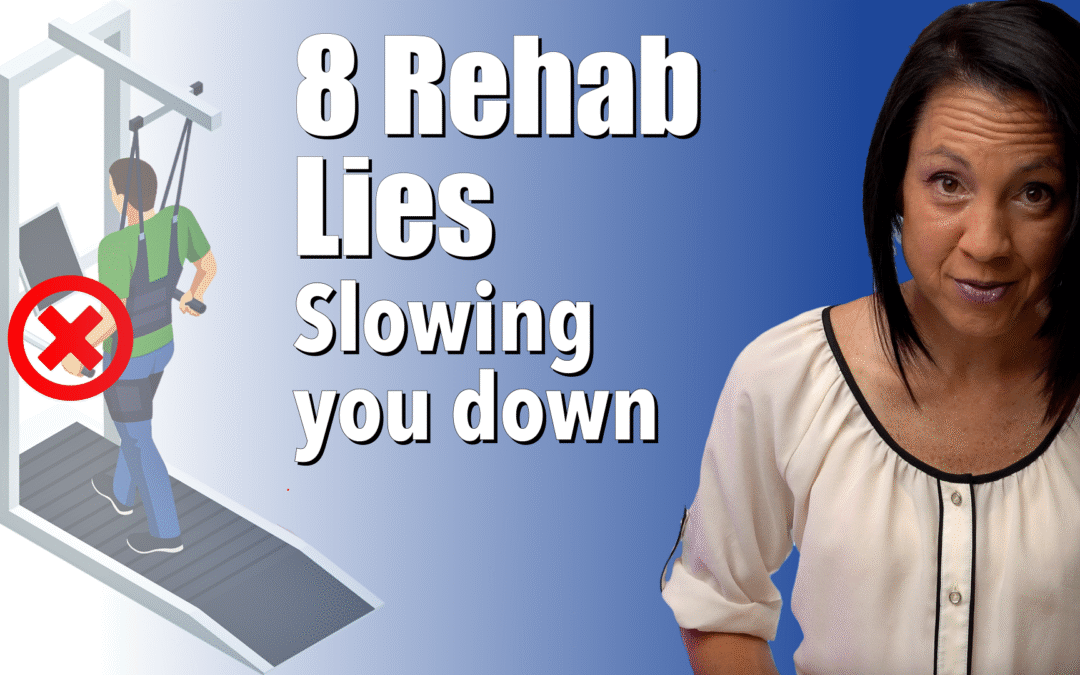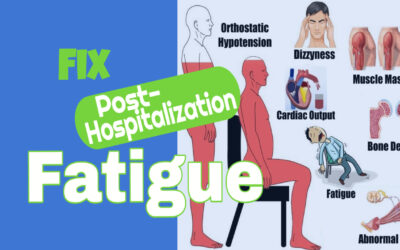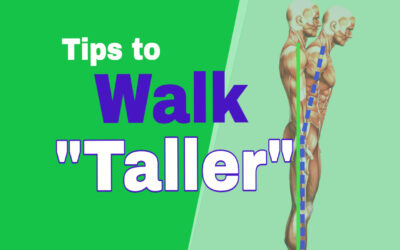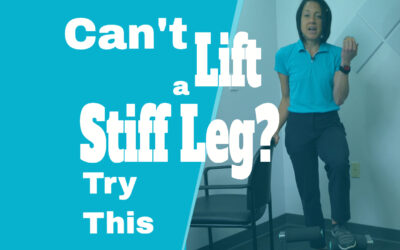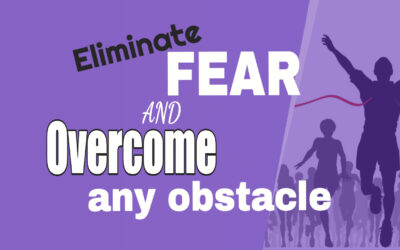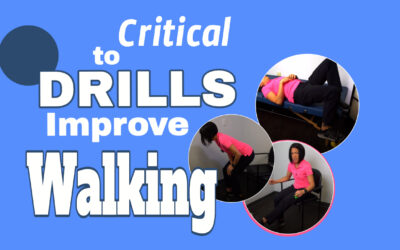8 Neuro Rehab Myths That Are Holding You Back (And What to Do Instead)
Debunking Common Myths About Neurologic Recovery
If you’ve ever been told that your recovery after a neurologic injury has an expiration date, or if your physical therapy has focused only on walking speed, this post is for you. Outdated beliefs in the healthcare system can hold people back from true recovery. We’re breaking down the most common myths and revealing the truth that can help you take ownership of your rehab journey.
Myth 1: Recovery Stops After 18 Months
Many patients are told there’s a point after which no new progress is possible. This is false.
The Truth: Your brain can rewire itself throughout your entire life. Neuroplasticity doesn’t stop after six months, a year, or even 18 months. Many patients make progress years after their injury, gaining new movement and independence. Supportive caregivers, repetition, and a growth mindset make this recovery possible.
Myth 2: Walking Speed is the Ultimate Goal
Many traditional therapists focus heavily on gait speed, often citing 1.4 meters per second as a benchmark.
The Truth: While walking speed has value (it relates to community mobility and fall risk), it’s not the most important measure of recovery. Overemphasis on speed can create harmful compensatory patterns, making it harder to restore movement on the affected side. The real goal should be quality of movement, not just speed.
Myth 3: “No Pain, No Gain” or “Pain means stop”
Pain advice is confusing. Some say push through it, others say avoid it entirely.
The Truth: Both extremes are misleading. Mild, tolerable discomfort is necessary to retrain your nervous system, but pushing through too much pain can increase spasticity and fear. On the other hand, avoiding all pain can stall progress. The key is finding your personal pain threshold where you can work without triggering negative emotional reactions.
Myth 4: Expensive Equipment is Required for Recovery
Robotic devices, subscriptions, and high-tech therapy tools are often marketed as essential.
The Truth: Most progress comes from intentional & repetitive practice, not gadgets. Many expensive tools end up unused in closets. In most cases, a skilled therapist and simple tools are far more valuable.
Myth 5: Assistive Devices and Braces Are Crutches
Canes, AFOs, and braces are sometimes stigmatized as signs of dependency.
The Truth: Devices like AFOs or canes are not signs of weakness. They are actually tools that support recovery, reduce spasticity, promote safer walking, and improve quality of life. The real risk comes from abandoning them too early, which can worsen gait deviations.
Tip: Avoid long-term reliance on HEMI walkers.
Myth 6: If You Can’t Do It Perfectly, Don’t Do It At All
Some therapists push for perfect movement, while others focus solely on speed.
The Truth: Waiting for perfection is counterproductive. Safe, consistent practice, imperfect or not, builds confidence, strength, and neuroplasticity. Even small mistakes help the brain learn and self-correct. Avoiding activity altogether increases sedentary time, which raises the risk of secondary health problems.
Myth 7: Recovery Only Happens in Therapy Sessions
Therapy sessions are valuable, but they are not enough on their own.
The Truth: Progress isn’t limited to the clinic. True neuroplastic change requires consistent repetition outside of therapy as well. The real breakthroughs often happen at home with daily, intentional practice. Therapists can guide you, but ownership of recovery happens in your everyday routines.
Myth 8: Recovery Means Returning to How You Were Before
Many people expect steady progress, but recovery often comes in fits and starts.
The Truth: Recovery is not always about going back to your “old normal.” It’s about creating a new normal where you can regain independence, adapt, and thrive. Even if some functions don’t return exactly as they were, you can still build meaningful strength, movement, and confidence to live fully.
Final Thoughts
Neurologic recovery is not limited by time, gadgets, or perfection. By letting go of outdated myths, you can embrace a balanced, realistic approach that supports lifelong progress. Remember: your brain is always capable of change, and with the right mindset, tools, and support, you can move forward in your recovery journey.
Articles you may be interested in
How to become a “high achiever” in Neuro Rehab
There are "high achievers" in every industry. Including in neuro rehab. I consider these the "outliers". The ones who did what others couldn't. They recover more movement than expected. High achievers have a different gear. And truth be told, it is not one that I...
Neuro Rehab: Your Mind Is Your Superpower
"Only you can decide how far you will go". It is true. Your mind is your super power. There are many who may disagree with me on this, but after 20 years of helping people who have suffered life changing injuries, my conviction is unwavering. You either believe you...
Neuro Rehabilitation: The Choice To Try
“Every accomplishment starts with the decision to try.” – JFK Yes, deciding to try is a choice. In my opinion, it is the only choice. "Choosing to try" (that impossible skill) is hard. What if you fail? What if you put in the time and you don't get your desired...
Post Hospitalization Fatigue: What causes it and how to do fix it?
Do you ever feel so tired, you don't even want to get out of bed? If so, you wouldn't be alone. There is a really good reason for this. Fatigue is an extremely common problem after a hospitalization. And sometimes, it has nothing to do with the reason you were...
Fix a forward flexed posture
Do you ever have any "well-meaning" therapist tell you to stand up taller? 😬🤷🏻♀️ Well, you would not be alone. This is a pretty common problem that has a few different root causes. What causes a forward flexed posture? Weakness Weak hip muscles can potentially lead...
Can’t lift a stiff leg? Try this.
Can't lift a stiff leg? This is a pretty common problem that has a few different root causes. Knowing the root cause is the best way to identify the best exercises. What can make it difficult to lift a stiff leg? Weakness Weakness in the muscles that flex the hip...
Spasticity: Does fear make it worse?
Fear can be a crazy thing. And in some cases can be the root cause of spasticity. Yup, negative emotions can actually make spasticity worse. And in this case, I am going to lump situational fear and anxiety together. What I mean is that maybe you are walking really...
Neurologic Rehabilitation: Master Turn Steps
Turn steps are a critical part of walking without fear of falling. It is also a critical step in neurologic rehabilitation. To understand how to master a turn step it is good to understand all of the little movements that are involved: What movements are required for...
Discharged from therapy. What now?
So, you have been discharged from therapy. So, what now? For some, this is a positive step in the rehab process. Some will understand right away that this is progress. On the other hand, for others it can bring up all kinds of negative emotions. "Is my therapist mad...
Walking Exercises for Stroke Patients
Many people inquire about the "best exercises" for stroke patients to improve walking. I like to use the term "Drills" when referring to "stroke exercises". Why? Because "Drills" are what I think of when I think of repetitive movement. Case and point, drills are...

